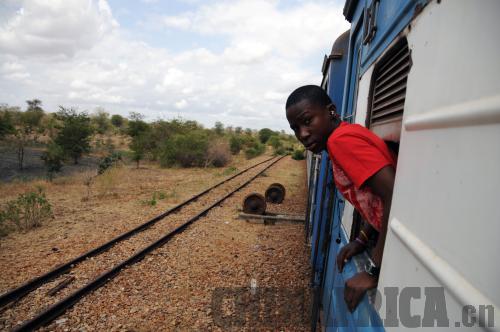|
 |
|
ROLLING ON: The ailing TAZARA line is benefiting from much needed technical and funding assistance from China |
Work is well underway on a study by Chinese experts to identify and rectify technical and managerial troubles bedeviling the legendary Tanzania–Zambia Railway Authority (TAZARA). Originally completed in 1975, and financed and built by China, the line is currently facing imminent collapse due to mismanagement, financial difficulties and inadequate maintenance.
TAZARA Rehabilitation Project Manager Jia Guangzhi said that the study's final report would be submitted to the governments of partner states in June 2013.
The study will identify ways to assist re-capitalization, reconstruction and restructuring by shareholding governments, and was officially commissioned by the governments of China, Tanzania and Zambia in Lusaka, Zambia on March 26, 2012. Tanzanian Transport Minister Dr. Harrison Mwakyemebe said that the one-year feasibility study commenced in June, and involves 140 Chinese experts, assisted by others from Tanzania and Zambia.
At the same time, interest free loans totaling $42 million will be made available to the Zambian and Tanzanian governments in an agreement signed by TAZARA Managing Director Akashambatwa Mbikusita-Lewanika and Lin Zhiyong, Chief Representative of the Economic and Commercial Representation of the People's Republic of China in Tanzania. The funds will pay for the refurbishment of 42 passenger coaches and the purchase of six new locomotives (four main-line, two shunting), various spare, and rescue and lifting equipment. Chinese instructors will also train railway staff.
Mounting problems
Jia said that the study's recommendations will help solve managerial problems and improve TAZARA's performance. In September 2012, visiting Chinese Vice Premier Hui Liangyu pledged the Chinese Government's full commitment to the project, promising that the experts are equal to the task of recommending how to best run the jointly-owned 1,860-km-long rail-line that stretches from Dar es Salaam, Tanzania to Kapiri Moshi in Zambia.
The Chinese-sponsored study aims to find ways to improve TAZARA operations to meet standards recommended previously by the Sub-Saharan Africa Transport Policy Program (SSATP), which proposed to increase the line's current annual haulage capacity of 600,000 tons, half of the peak 1.27 million tons recorded in the late 1970s, and also increase transit times.
In order to help meet these goals, TAZARA also engaged SMH Rail of Malaysia in October 2012 to rehabilitate its discarded locomotives and wagons in an effort to upgrade rail transport in Zambia, according to Akashambatwa Mbikusita-Lewanika, TAZARA Managing Director.
The impetus to expand comes from a rise in cargo volume and passengers passing through the port of Dar es Salaam in recent years. The intended expansion fits into the Southern Africa Development Community (SADC) Customs Union's plan, which will become fully operational by 2015. Under the customs union, SADC is committed to halving the time spent waiting at Dar es Salaam or any border posts by reducing or removing customs red tape.
In the years since its establishment, TAZARA has received regular interest-free loans from the Chinese Government through the Protocols of Economic and Technical Cooperation, signed by Tanzania and Zambia. However, despite these loans, the transnational railway was hamstrung by a weak financial base, poor infrastructure maintenance and demoralized personnel.
This led to poor service and difficulties with delivery of goods and passengers from several landlocked eastern and southern African countries to world markets. The line also experiences ongoing problems relating to the theft of track metal and other stock items, which are sold as scrap or used in structural constriction unrelated to the railway.
Recently, there have been delays in the payment of employee salaries, as well as a lack of standard tariffs, and controversies concerning the benefits of TAZARA workers.
|